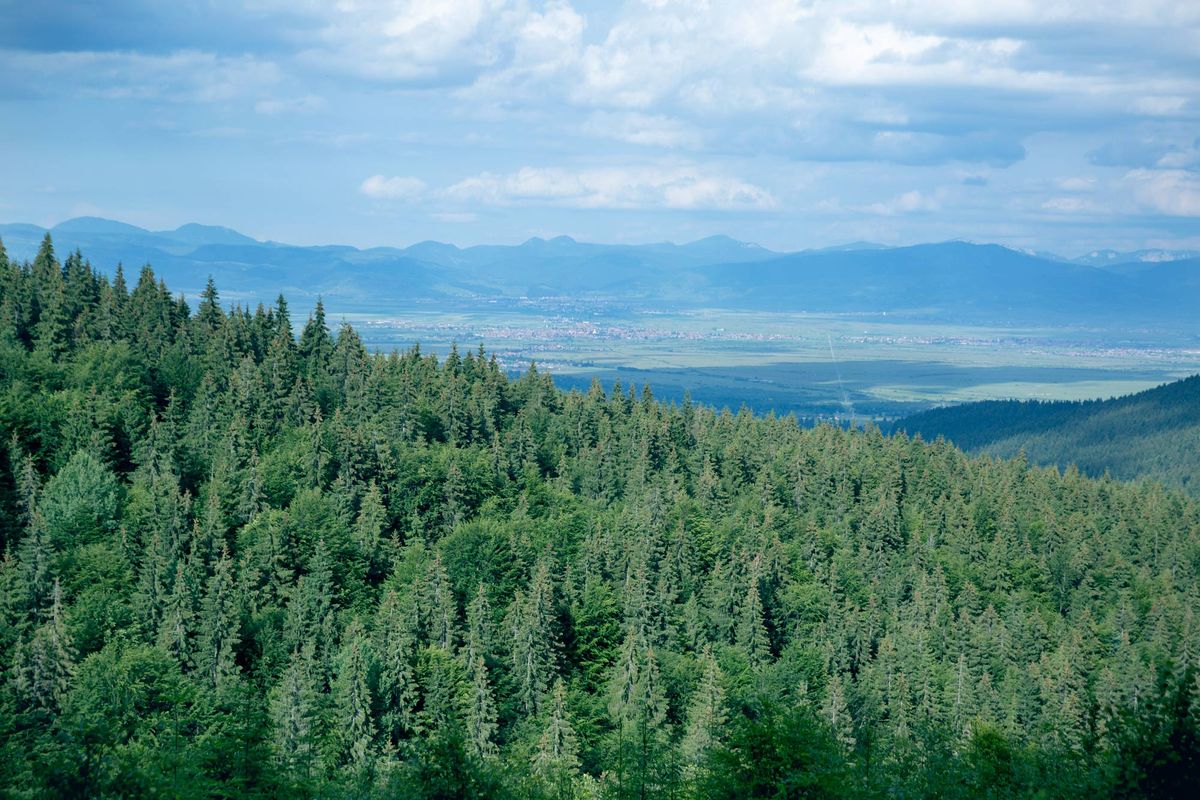Stalking
Roebuck hunting in Romania
An expert for the hero
Transylvania. Legend has it that this is the home of Count Dracula. The truth is that the mighty Transylvanian mountains and magnificent forests are the domain of bears, wolves, deer, chamois, and wild boar. While down on the plains, something else thrives – gold medal roebucks.
Transylvania, Romania. Everyone has heard of it. Mighty castles, vast wilderness – and blood-sucking vampires. But fewer have actually visited the country.
The first thing that strikes me is the complete absence of blood-sucking mosquitoes, despite the high Summer heat. The second is the brutal beauty of where the Romanian wilderness climbs up into the Carpathian mountains. Centuries-old spruce and pine forest reach impressively high into the bright blue June skies.
Something magical reigns over the wooded valleys that are home to red deer, brown bear, wolf, wild boar and chamois. Down below, in farming country, lives the object of our long weekend of hunting – roe deer. Not only are the bucks here plentiful, they are also often heavily antlered. For the dedicated hunter, there is every chance of shooting a really fine medal-level buck.
“A large brown shadow is moving a few tens of metres away from us. It is a large brown bear.”
Large bucks
“The bucks start moving at eight”, says Arpad, our hunt organizer. Arpad speaks perfect English and is himself an avid hunter, like his son Arpi, who is also with us. Our local guides are Piko and Andor, two weather-beaten hunters who know these hunting grounds by heart.
We are staying just outside the village of Praid. The hunting grounds begin close to our accommodation.
Thanks to a Summer shower that has just rejuvenated the landscape, scents of flowers and herbs pervade our first evening of hunting. On a small hill, a beautiful church stands proud. In the background, the Carpathian Mountains rise up. In this hilly landscape, we start by scouting from the heights. A small buck is walking a few hundred metres away.
“There are bucks here with trophy weights of 500 grams plus”, says Arpad, scouting the area around the small buck with his binoculars. “We had a Danish hunter here a few years ago, who took the largest buck to date – 750 grams. Quite a trophy!”
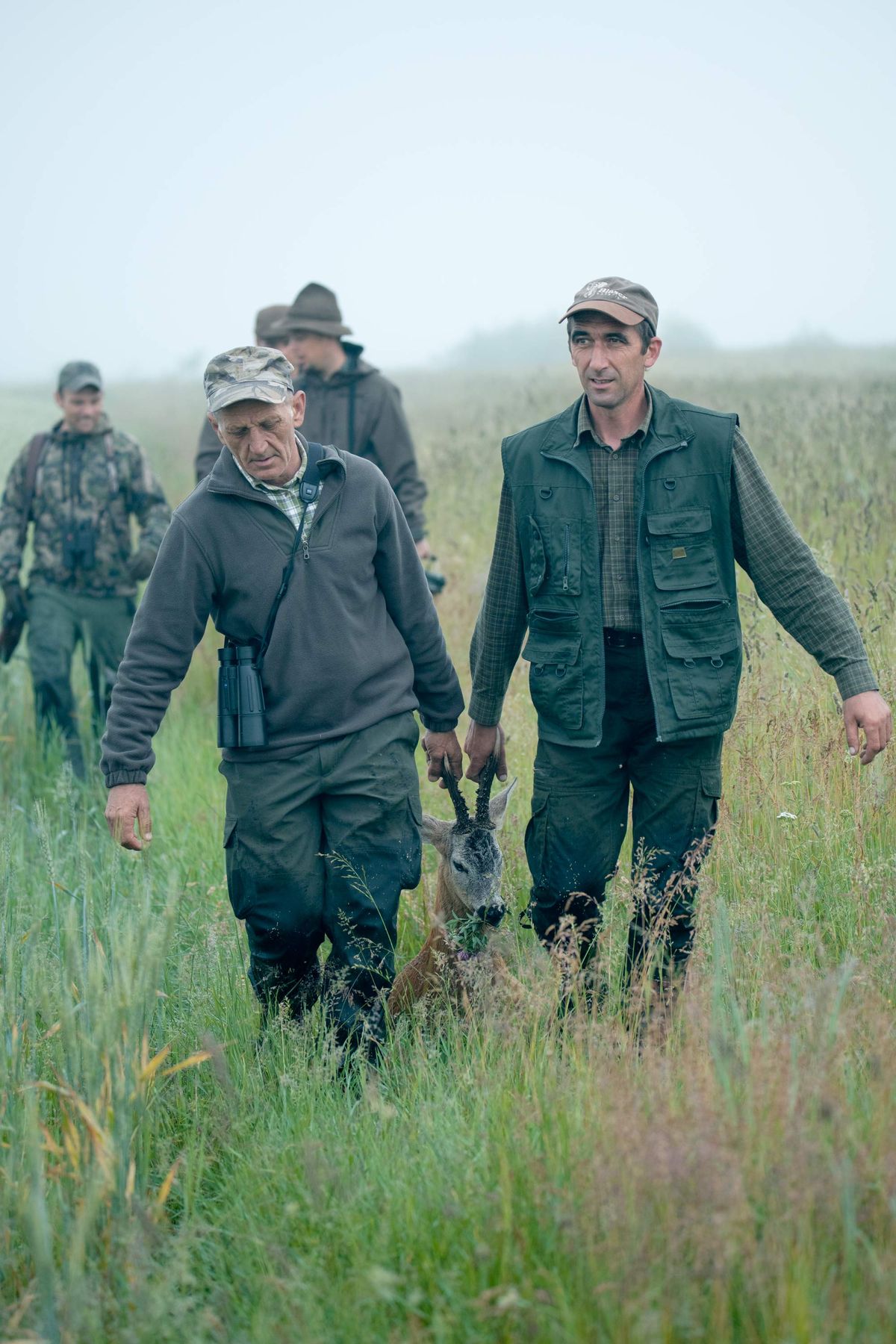
Vast hunting grounds
The area we are hunting in is vast. In total, Arpad and Arpi have access to 250,000 hectares of hunting grounds, but of course we are only covering a fraction of that. Under Romanian law, each hunting ground must be at least 7,500 hectares, with certain local variations.
Where we are hunting, the law stipulates at least 10,000 hectares. In the vicinity of the Danube, "only" 5,000 hectares suffice. Every hunting ground has a professional hunter with official responsibility for the hunt. Hunting and game management in Romania are carefully controlled.
In Arpad and Arpi's grounds around Praid, about 250 bucks are shot every year. As a rule, each buck hunter shoots 4-5 bucks. I am more restrictive and, on this trip, am looking for a single big buck.
A cuckoo calls in the distance. It is now well past eight. Apart from the little buck down below us, there’s an alarming dearth of game. A well-set-up evening in South-eastern Sweden would beat this hands down.
“Mid-June is not the best hunting season. You're the last hunter to join us before we take a break till the end of July, when the rut begins. The grass has grown too high now. It is difficult to spot the animals. The best time is May, or late July and early August”, says Arpi, as we stow our things in the car to take us down to the plains.
A fine buck suddenly stands up on a grassy hill just a few hundred metres above us. With the wind in the right direction, we stalk silently and cautiously, but when we get up onto the hill, the buck has gone. Instead, we bump by chance into a small two-year-old buck that quickly disappears into the greenery. A moment later we are rattling down to the seemingly endless, cultivated plains.
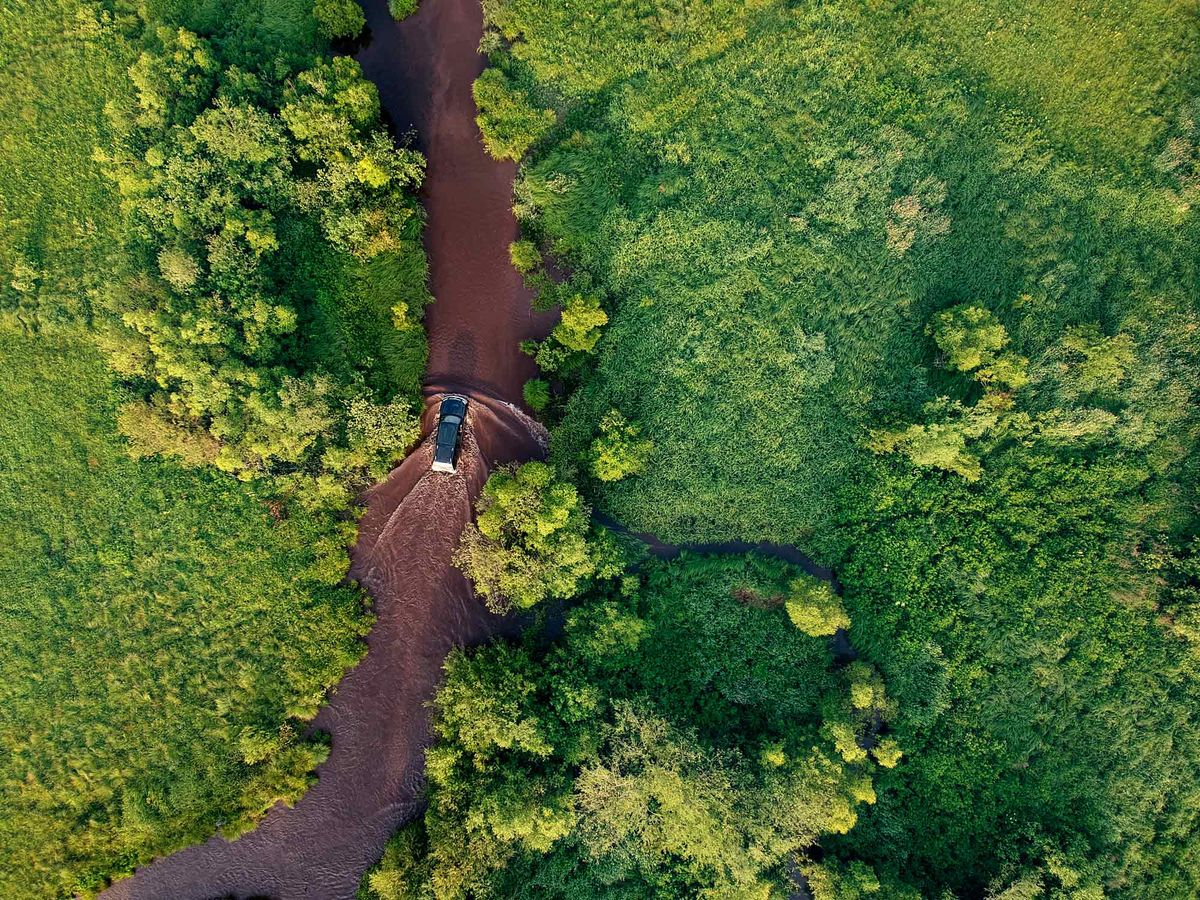
A long hunting heritage
Transylvania is most famous from the Irish author Bram Stoker's Count Dracula. Although the book was written in 1897 and the main character is fictional, Transylvania has become synonymous with the iconic vampire.
Geographically, real-life Transylvania consists of a 300-500-metre-high plateau, surrounded by the Carpathian Mountains on all sides. The region is divided into 16 provinces, with the largest city being Cluj-Napoca with 320,000 inhabitants. Contrary to popular belief, Transylvania is not a poor rural area. It is the heart of Romania. It is the birthplace of the nation and accounts for 35% of Romania’s GDP, due to its mineral resources, cattle raising, agriculture and timber industries.
Transylvania has a long hunting heritage. Bears, wild boars, deer and wolves have been hunted here since the Stone Age. The first hunting reserves were established back in the 15th century, where they managed the game, and in some places even introduced new species, such as fallow deer.
When Romania declared independence in 1877, hunting became a royal sport. Hunting castles or stately lodges were built in each hunting area. Apart from the taking of hares and small game, hunting was reserved exclusively for royalty and the nobility. In the 19th century, Romania attracted many aristocrats from around the world. They were lured by the stately Carpathian red deer, the big brown bears and the beautiful chamois.
For a time, Transylvania was part of Austria-Hungary and it started attracting the Hungarian elite with an interest in hunting. There is a documented hunt from the early 20th century where the take was 28 bears from a three-week hunt. At the same time, a neighbouring team of hunters shot 22 bears.
Even today, Romania has one of the highest populations of brown bears in the World. Nicolae Ceausescu, Romania's dictator between 1965 and 1989, was obsessed with bear hunting, so much so that he forbade anyone else from hunting them, except specially invited guests. It turns out that Andor was there at the time. He was one of the dictator's many hunting guides.
“Once we had to organize a hunt for Ceausescu and Muammar al-Gaddafi. The grass by the side of the road was not considered green enough, so the villagers had to paint it green.” Andor shakes his head.
Nicolae Ceausescu shot one of the World's largest brown bears, a 650 kg male that measured 640 CIC points. It was not the dictator's only gold trophy – in total, he achieved 270 gold medal trophies, 114 silver and 34 bronze medals of various game species, according to CIC.

Close call with a bear
A buck’s antlers protrude from the tall vegetation, scarcely 200 metres away. Pulses rise. Everyone's eyes are now on the field. This is the first shootable buck, at least for me. But exactly how big it is in the antlers is still impossible to see. We wait. We are straight downwind and the buck gives no sign of going anywhere. Time passes. A doe stands up in the grass some distance away.
In a gap in the greenery, Piko suddenly catches a glimpse of the buck. He shakes his head.
“Shootable yes, but not if you want to take a large one”, Arpi translates. We continue. Shortly after, we sneak up on an even bigger buck, but he gets wind ofus and is soon bouncing off over the field. When darkness begins to fall, we have seen ten or so bucks of different sizes, but no medal buck.
From a height, we see some wild boars emerge from the forest, heading for a feeding station a few hundred metres away. We decide to head over there ourselves and see if any large boars have turned up.
We are creeping up to the feeding station when Arpi suddenly stops in his tracks. I look over his shoulder. A large brown shadow is moving a few tens of metres away from us. But this is no boar. It is a large brown bear. Completely unconcerned, it lumbers off into the forest.
“It has been at the feeder”, whispers Arpi.
In October 2016, the authorities banned bear hunting in Romania. The decision was taken after intense pressure from "green organisations". Since then, the bear population has increased sharply.
“There are too many now. There are 8,000 bears in Romania, perhaps more. Some people believe there are more than 10,000. We hope that the bear hunt will open again in the Autumn”, whispers Arpi, as we settle down in a tall tower by the feeding station.
On the steps to the top of the tower there are sharpened metal tubes, a kind of upgraded version of the thin metal spikes used to deter pigeons from settling in certain places. These have the ‘minor’ difference that they are designed to keep bears away.
As darkness comes, so too, finally, do the wild boars. The tusks on the large boars here often exceed 22 centimetres. The record animal had tusks of 27 centimetres. However, no such giants are visible today. This evening, it is mostly medium-sizedboars that have ventured out.
After a few hours, we sneak back out into the darkness of the kingdom of the bear. The shadows of the summer night give an impulse to the imagination and our nerves are on edge. I have a firm grip on our only weapon. Only when we – at last – reach the cars, do I remove the cartridge.

Large buck in sight
Andor starts the morning with a cigarette. The smoke is barely distinguishable from the thick fog that has drifted in overnight. Visibility is close to zero. Andor shakes his head and stretches out his palms towards the milky white landscape that must lie out there somewhere. Arpad shrugs apologetically. “It may clear. We’ll give it a try.”
Out in the fields, the visibility is slightly better and we actually manage to spot some bucks. But sneaking up on them is more difficult. The fog rolls in, and suddenly the bucks are conjured away. Stalking ghost roebucks is certainly exciting, but in the end we decide to break off and focus on coffee instead. I pack the rifle – a borrowed Sauer 7 mm Remington magnum with a Swarovski scope – into the car.
Then we suddenly see a doe out in the wheat field barely 200 metres away. The fog comes and goes, but as it drifts past, we spot something protruding from the greenery in the next field. A stick with grass on it? Or a small tree standing up and playing ghostly tricks on us? Or the antlers of a beautiful buck?
I pick up the binoculars. Look intently. Something’s not right. This is no buck antler, but there is clearly an animal moving in the greenery. Then I understand what I'm looking at – a buck has tangled its antlers in some grass and the twine from a hay bale. It sits on top like a large hairdo. And within the hairdo is a good set of horns. “Large buck”, confirms Arpi, nodding his head.

The shot is taken
The buck is busy with the doe and the swirl of the fog has now quietened down somewhat. I start the stalk, but take things easy. When I am around 140 meters away, the doe looks straight at me. But then returns calmly to grazing. From this distance and at this angle, I can see that the buck is a magnificent one. Every buck hunter's dream – a gold medal dream.
The problem is that the grass where the buck is standing is too high. I advance cautiously through the wheat to get into a shooting position. Sweat is flowing. Suddenly the buck takes two quick bounds out of the tall grass. Broadside. The blue twine from the hay bale – and the protruding white tops of the horns – are the last things I see before I quickly rest the gun on the shooting stick and fire.
The shot feels good – very good. When I step forward a moment later, I’m sure he has fallen where he stood. Of course I'm wrong. I am transpierced for a few seconds by hunter’s anxiety. Has the biggest buck I have seen slipped through my hands from poor shooting under optimal conditions?
We start tracking. Andor calls out. He's found blood. We continue across the field. No buck. When we reach the wheat, to my great relief, I see there is something lying there. My magnificent buck. I sit down next to him and place my hand on him. The blue baling twine is tied tight and hangs all the way to the ground. The twine and the grass hide a beautifully pearled sixer, long and strong. My dreams of gold have come true. After drying, the final weight comes to an impressive 585 grams.
In the evening, over a lively nip of pálinka, I realize what the fictional vampiric Transylvania and the real one have in common: both sink their teeth into you and won’t let go. Once you have hunted here once, you will want to return. Now I have had my gold-medal success in the fields, the next time, I want to discover the high mountains and the deep forest.
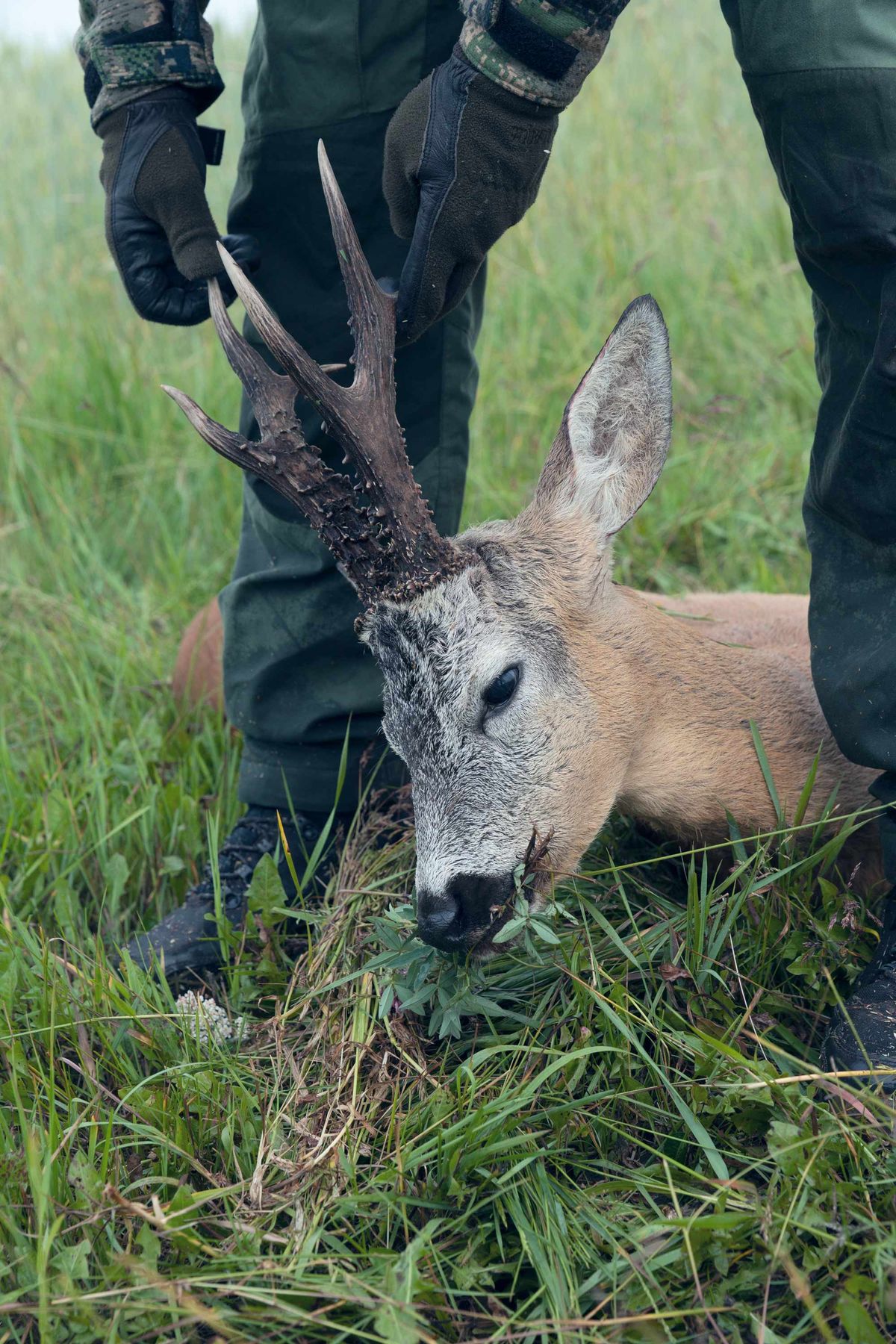
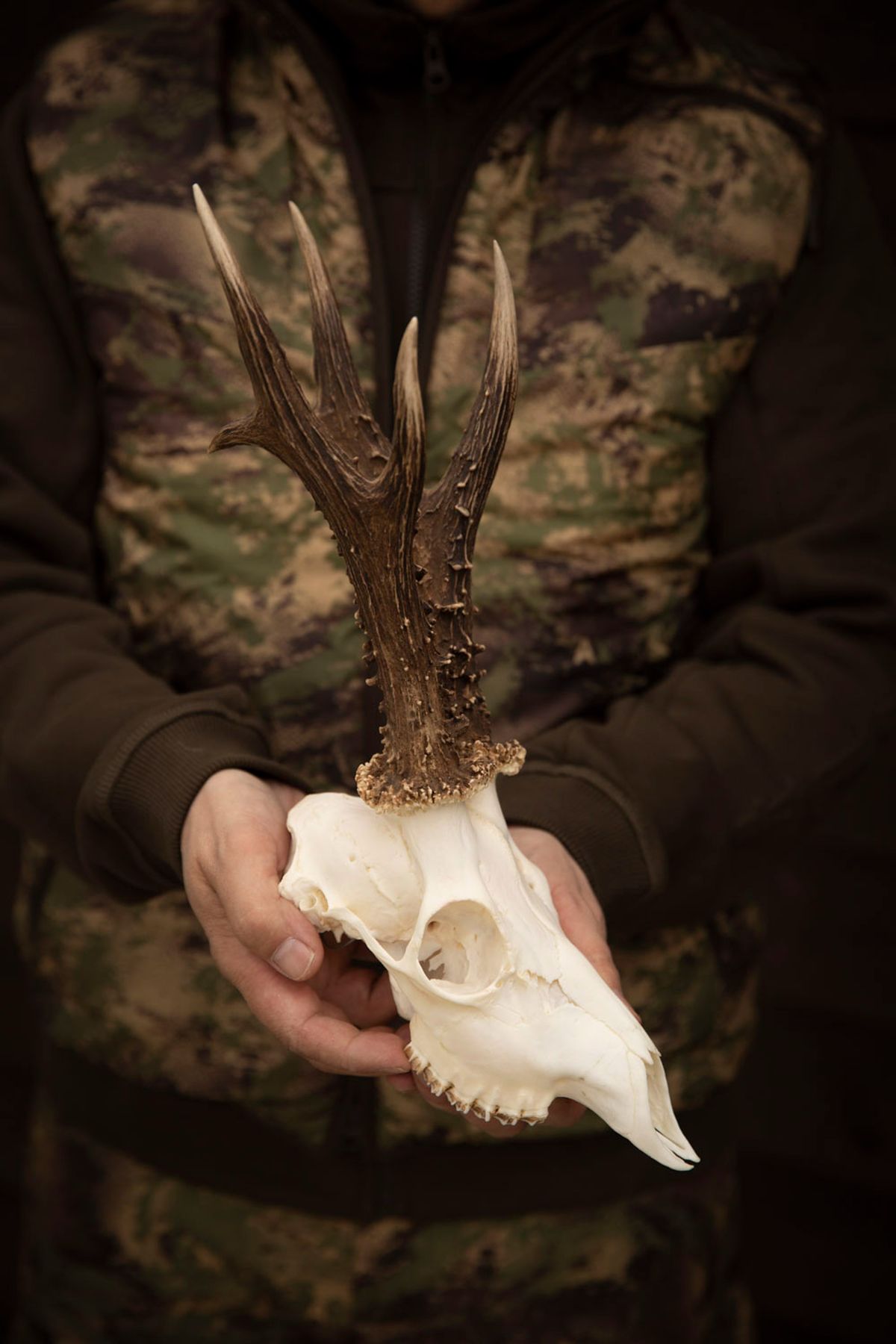
Buck hunting in Romania
The roebuck hunt in Romania runs from the 1st of May to the 15th of September. The best time to go hunting is the first two weeks of the season and from the late-July rut to early August.
The hunting trips are generally for four days. We hunted in the province of Harghita, near the village of Praid. The event was organised by Diana Hunting Tours, www.jakt-resor.se. The flight landed in Sibiu and from there it was a three-hour transfer to the accommodation which was close to the hunting grounds.
For buck hunting, no special equipment is required other than what is usual elsewhere, such as good binoculars, shooting stick, stalking garments, and rain gear. Romania is a member of the EU, so if you are flying with your own weapon, make sure you have a valid European Firearms Pass.
A buck hunt with full board costs around Euro 1,000 for four days. Trophy fees are not included. If you shoot medal-level bucks, the costs quickly skyrocket. Always double-check the trophy fees before starting the hunt and also how many bucks you can shoot on your particular hunt.
Be clear with the hunting guide about how big a buck or bucks you want to shoot, to avoid any misunderstandings once the opportunity to shoot arises. Feeding-station shoots of wild boar can often be combined with buck hunting.
